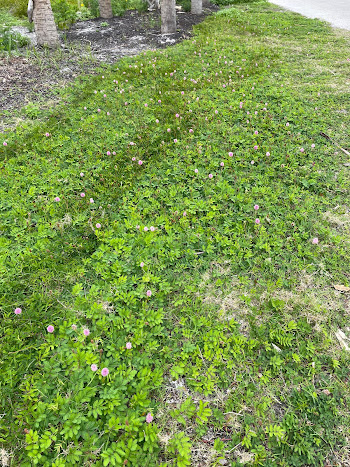What you can do about red tide
by Barbara Joy Cooley, Chair of the COTI Environment Committee
What can you do about red tide? There is something. Maybe you have done it, or are already doing
it. Maybe you haven’t done it yet, but you
will – hopefully, soon.
What is it that you can do?
Go Native! Get rid of that green,
grassy lawn and replace it with native vegetation. City of Sanibel guidelines state that at
least 75 percent of your yard and garden should be planted with native plants. To meet the guidelines, only 25 percent can
be non-natives.
In many ways, green, grassy lawns are the worst of the
non-natives because, as City Councilman Dr. Scott Crater stated so clearly on
March 7, “You can’t grow grass on sand.
You cannot do it. It is
impossible. The only way to grow grass
on sand is to dump chemicals on the ground.”
Those chemicals include nutrients that eventually make their
way into coastal waters to feed the red tide algae, contributing to red tide
blooms like those that are plaguing our coastal waters now.
Green, grassy lawns also require plenty of water; that water
increases the runoff into coastal waters.
Sanibelians who are “in the know” about water quality tend
to not have green, grassy lawns. For
example, each of us on the Committee of the Islands (COTI) board does not have
a green, grassy lawn.
Tempting as it may be to hire a landscaper to install sod
for an immediate “greening up” of your yard and garden, please resist that
urge. Native plants may be a little more
difficult to find now after Hurricane Ian, but they are available, and will
become increasingly available.
Which native plants survived best after the hurricane? “Some of the most resilient native plants
were cabbage palms, saw palmettos, and green and silver buttonwoods . . . But
so were coonties, wild olives, necklace pods, joewoods, Christmas berries, sea
oxeye daisy, Simpson’s stoppers, sea-grapes, bay cedars and muhly grass,” said Stephen
Brown, a horticultural agent with the Lee County Extension Service, at a recent
Sanibel Vegetation Committee program at BIG ARTS. “Although gumbo limbos, mahoganies, and
strangler figs were badly broken, they have been quick to rebound. Sprouting
from seeds in the sediment were natives such as blue porterweeds, seaside goldenrods,
and beach sunflowers.”
Now is the time. Go
Native! Don’t feed the red tide.
Here are some resources for you to use as you Go Native!
SCCF’s Post
Hurricane Replanting Guide, December 2022
City of
Sanibel’s Horticulturally Available Plant List, 2021
To find native plants for sale, visit the SCCF Native Plant
Nursery at 1300 Periwinkle Way on Sanibel; the All Native Garden Center &
No Lawn Landscaping at 300 Center Rd. in Fort Myers or on the web at nolawn.com;
or Natives of Corkscrew at 13321 Peace Road in Buckingham, or
nativesofcorkscrew.com.
Have you found some useful resources or ideas for replanting
with native vegetation? Please share
them with us at coti@coti.org, or post them
on our Facebook page.
Photo below: This sturdy groundcover, called “mimosa” or “powderpuff” (Mimosa strigillosa), is native to states bordering the Gulf of Mexico. It attracts butterflies, and can even tolerate being mowed. Photo by Barbara Joy Cooley
Photo
below: This mimosa survived Hurricane
Ian and the debris piles. Photo by Sarah
Peck.



Comments
Post a Comment